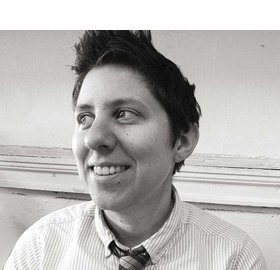Athletic contests are often called “turf wars,” but what of the turf itself? For what, exactly, are the young female soccer players in The Wolves doing battle? For illumination, I turned to Laura Jellinek, the production’s set designer. I asked her about the material – the turf – that covers the floor of the Mitzi E. Newhouse and the wall behind.
“We looked at different samples for the set,” Jellinek told me. “Some are trying to be artificial grass and some are super-fake turf. The artificial grass, with bits of straw, is supposed to trick you. But that’s not what we wanted for this show, because the girls are practicing on what’s supposed to be indoor turf.”
As with all theatrical materials, the turf had to be fire-retardant. Equally important, said Jellinek, is that the material be suitable for not just a floor but for a wall. “In the previous places we did the show, we didn’t have a full wall as part of the set. It’s harder to get seams to look good on a wall, so here we have just turf itself and rubber layer underneath. Before, we had felt underneath.”
Another issue with the move to LCT was the turf’s green color and the green of the girls’ uniforms. “The seats in the Mitzi are green. Which meant green overload,” Jellinek said. “So we decided to change the uniforms to black.”
Jellinek began learning about materials in high school, outside Philadelphia. “The theater program was run by real Philadelphia theater people. There was a big non-acting element. I worked in costumes and scenery.” At Brown, where she was an undergrad, Jellinek didn’t major in theater but continued her interest. “I got hired as a work-study assistant to help with props and I got to know Michael McGarty, a teacher and designer at Brown. I designed student productions.”
It was in New York, where she pursued an MFA in design at NYU, that Jellinek met Lila Neugebauer, the director of The Wolves. The women’s initial collaboration, the first of many, was on a play called Samuel & Alasdair. “I was at the point,” Jellinek remembered, “where I wasn’t doing shows anymore for a pittance with people I didn’t know. I didn’t know Lila. She called me. We had a crazy two-hour phone conversation. I was in rural Washington, and the call kept getting dropped. But by the end of the conversation, I was doing the play and I was a big fan.”
Jellinek said she doesn’t have an overriding aesthetic in her work. “My hope is that what I do serves the play. In Mary Jane, for example” – the acclaimed new play, by Amy Herzog, that just wrapped its run at New York Theatre Workshop – “the first set is a naturalistic apartment, which couldn’t be more different than The Wolves design. Sometimes, it’s about the furniture, sometimes it’s about the turf on the wall.”
Brendan Lemon is the editor of lemonwade.com.
